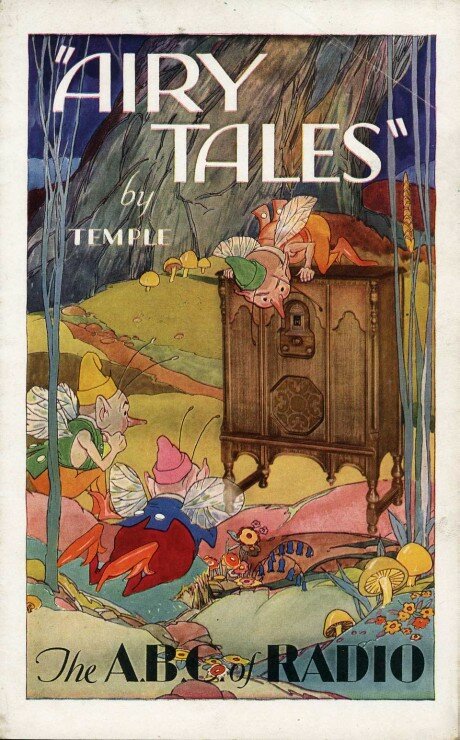| Title |
Lovely Airy Tales 1929 |
| Category |
| Catalog, gallery |
| Date |
|
1929 |
| Why It's Interesting |
|
This beautiful booklet/catalog was issued by the Temple Corporation of Chicago to promote its radio receivers. Offering the ABCs of Radio, it stressed the wonders of radio, the romance of its discovery and expansion. Temple illustrated three models of expensive console radios in historicizing cabinets: the Lowboy $149; the Highboy $189; and the Combination, which, at $289, combined a radio and a phonograph. [Incidentally, I recently had a class read books for young adults published around this time, and one had to ask me what a phonograph was.] The radio console shown on the cover is not one of those illustrated in the catalog, but it resembles the Lowboy. 1929 was the absolute high point for demand for luxurious radios of this kind. Though radio demand would continue to grow during the Thirties, most consumers would be buying economical receivers more suited to their reduced incomes. |

This website seeks to encourage researchers and collectors to discover and study obscure ephemera that document American culture and life. Worldcat reveals that most of the items that I post cannot be found in more than a few research libraries–often none at all. Alternately, research libraries do not bother to catalog ephemeral publications like these. I believe, however, that because these were distributed free, or at nominal cost, to consumers, they were the publications most likely to make their way into homes and be read by large numbers of Americans.
I acquire pre-1960 examples of the kinds of publications that prove so useful when scholars study 19th-Century America. The limited competition that I encounter for them suggests that libraries, which could easily outbid me, have little interest in post-Civil War and 20th-century ephemeral publications in general.
I try to anticipate what materials future historians will find useful. Being an historian first and a collector second, I organized this website to encourage others to do this too—even if this means new competition for me. I am aware that I could be wrong in prizing particular ephemera or even whole classes of ephemera. I may even be wrong to encourage scholars to study obscure ephemeral publications; these may be obscure for good reason.
Ephemerastudies.org will permit me to share with others the information and imagery that I am acquiring, and to benefit from the knowledge, intelligence and experience of other scholars and collectors. Please contact me with your impressions of the site.


